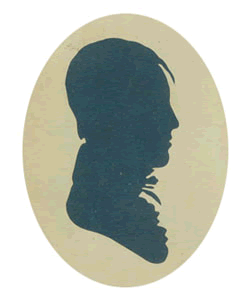
No image available
Henry Dwight Sedgewick
Gender:
Male
Born:
September 23, 1785
Died:
December 23, 1831
Home Town:
Sheffield, MA
Marriage(s):
Jane Minot Sedgewick (1817)
Biographical Notes:
Henry Dwight Sedgewick was the son of Judge Theodore and Pamela (Dwight) Sedgewick. His father acted as the Judge of the Supreme Court of Massachusetts and was involved in the famous case of Elizabeth Freeman "Mumbet" who was a runaway slave and came to Massachusetts shortly after the adoption of the Massachusetts constitution. Judge Sedgewick ruled that "all men are created free and equal: under the Massachusetts Bill of Rights." Elizabeth lived with the family and helped raise the children and was buried in the family plot. Sedgewick became a writer for the North American Review and other papers. Sedgewick was an ardent opponent to slavery as well as a strong advocate of free trade. He died at Stockbridge, MA.
Education
Years at LLS:
1807
Other Education:
Graduated from Williams College in 1804.
Profession / Service
Profession:
Journalist
Admitted To Bar:
New York
Immediate Family (Why only immediate family?)
- Jane Minot Sedgewick
Wife - Pamela Dwight Sedgewick
Mother - Theodore Sedgewick
Father
 The Citation of Attendance provides primary source documentation of the student’s attendance at the Litchfield Female Academy and/or the Litchfield Law School. If a citation is absent, the student is thought to have attended but currently lacks primary source confirmation.
The Citation of Attendance provides primary source documentation of the student’s attendance at the Litchfield Female Academy and/or the Litchfield Law School. If a citation is absent, the student is thought to have attended but currently lacks primary source confirmation. Records for the schools were sporadic, especially in the formative years of both institutions. If instructors kept comprehensive records for the Litchfield Female Academy or the Litchfield Law School, they do not survive. Researchers and staff have identified students through letters, diaries, family histories and genealogies, and town histories as well as catalogues of students printed in various years. Art and needlework have provided further identification of Female Academy Students, and Litchfield County Bar records document a number of Law School students. The history of both schools and the identification of the students who attended them owe credit to the early 20th century research and documentation efforts of Emily Noyes Vanderpoel and Samuel Fisher, and the late 20th century research and documentation efforts of Lynne Templeton Brickley and the Litchfield Historical Society staff.
CITATION OF ATTENDANCE:
Catalogue of the Litchfield Law School (Hartford, CT: Press of Case, Tiffany, and Company, 1849), 6.
Contact Us
Do you have more information for the Ledger?
If you have family papers, objects, or any other details you would like to share, or if you would like to obtain a copy of an image for publication, please contact us at curator@litchfieldhistoricalsociety.org.